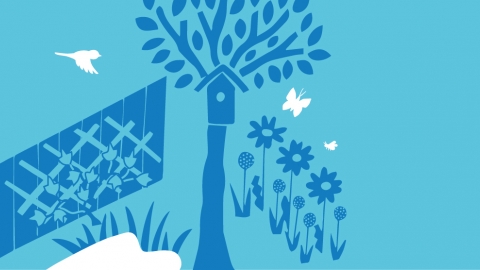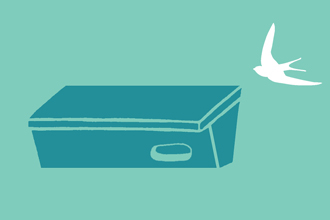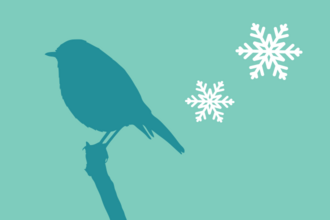
How to start a wildlife garden from scratch
Use the blank canvas of your garden to make a home for wildlife.
With a bit of encouragement your garden can become a popular destination for a wide range of visitors.
While brand new gardens are typically bland and void of plants, the advantage is that you have a blank canvas to work with. Improving the stony, thin, compacted soil requires some time and effort, but many wildflowers actually prefer poorer soils, so conditions are ideal for this kind of wildlife-friendly planting. Although it may take some time for other plants, shrubs and trees to get established, you can start from scratch and plan exactly what you would like to put in.
Planning your wildlife-friendly garden
- Provide shelter: Start by providing shelter, resting and nesting areas with a couple of silver birches and/or a selection of native shrubs, like holly or guelder rose. This will add height to your landscape and also provide much-needed shade for you in summer.
- Use all the available space: Your garden is a three-dimensional space, so try to make use of all the available surfaces, including walls, fences and roofs. The most wildlife-friendly gardens are those full of plants, with little or no ground showing at all! Even your patio can be enhanced with containers of nectar-rich plants that will attract butterflies and bees.
- Make a meadow: Your garden may well have a lawn which, if mown too frequently, will not support much wildlife. Consider replacing it completely in favour of more planting, and/or a pond. If you want to keep a grassed area, plant a small wildflower meadow that will play host to a multitude of butterflies, bees and other insects.
- Dig a pond: However small your patch, there is always room for a pond. Even a small sink or tub pond, with a few aquatic plants, can make a great wildlife habitat. Ponds of all shapes and sizes benefit different communities of wildlife – water-loving insects dive beneath the surface, birds prey on amphibians, and small mammals come to drink.
Establishing your garden
- Use wildlife-friendly pest control: The tender new shoots of your establishing plants might delight the local community of slugs and snails, but don’t be tempted to use pellets containing potentially harmful chemicals – there are plenty of alternative ways of controlling them, such as creating barriers or companion planting. Try to accept that they are an inevitable presence, however, as they do provide a delicious meal for frogs, toads, hedgehogs and birds.
- Provide vertical planting: Fix wires and trellis on any appropriate vertical surface to support wildlife-friendly climbing plants, such as honeysuckle, jasmine and wisteria. Ivy and Virginia creeper can gallop up a wall or fence unaided and offer an excellent habitat and food source for many creatures.
- Go native: Choose plants that are native to your area – a walk around the local countryside will provide inspiration.
- Provide food and nesting sites: Provide feeding stations, water, and nest boxes to help birds and animals while your plants are establishing.
Maintaining your new garden
- Don’t use fertiliser, wild flowers do best in poor soil.
- To get the most out of your wildflower lawn, mow it short in late winter, lifting the clippings, and then leave the next mow until late summer after the flowers have all seeded.
- A lawn that hasn’t been fed will benefit from an annual maintenance programme of scarifying and aerating.
- A newly grassed area needs regular mowing in its first year to give it a chance to establish.
- Don’t dismiss all weeds – a handful of nettles grown in a pot to stop them spreading, or tucked away in a corner, provide important food for butterflies.
- If you decide to build a patio, leave some gaps in the pavers for extra planting opportunities.
Think of your garden as a jigsaw piece, slotting in next to many other green spaces to provide wildlife with a ‘corridor’ in which to move around freely!
Suggested plants:
- Silver birch - Betula pendula
- Guelder rose - Viburnum opulus
- Common hawthorn - Crataegus monogyna
- Holly - Ilex aquifolium
- Ivy - Hedera helix
- Honeysuckle - Lonicera periclymenum
- Jasmine - Jasminum officinale
- Wisteria - Wisteria floribunda
- Cotoneaster spp.
- Firethorn - Pyracantha spp.
- Japanese quince - Chaenomeles speciosa
- Hebe spp.
- Skimmia - Skimmia japonica
- English lavender - Lavandula angustifolia
- Common sunflower - Helianthus annuus
- Common knapweed - Centaurea nigra
- Daisies, dandelions and thistles
- Teasel - Dipsacus fullonum
- Common mallow - Malva sylvestris



